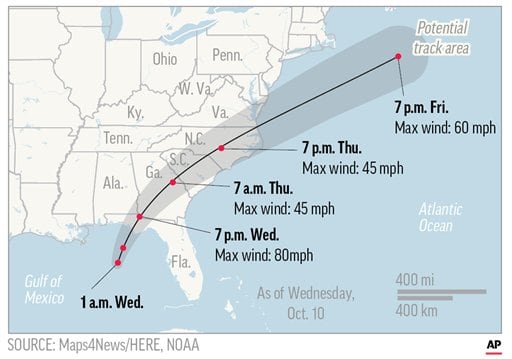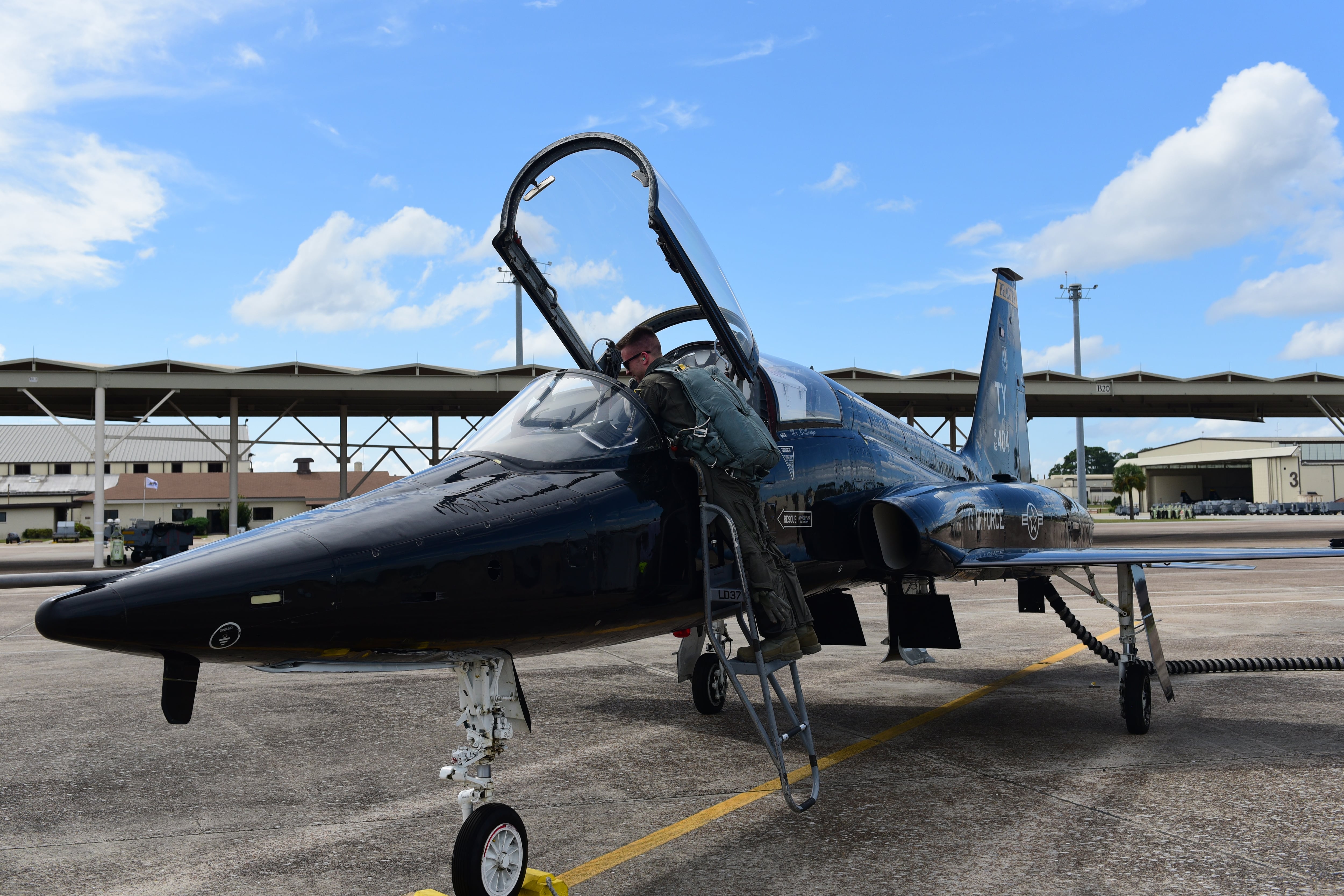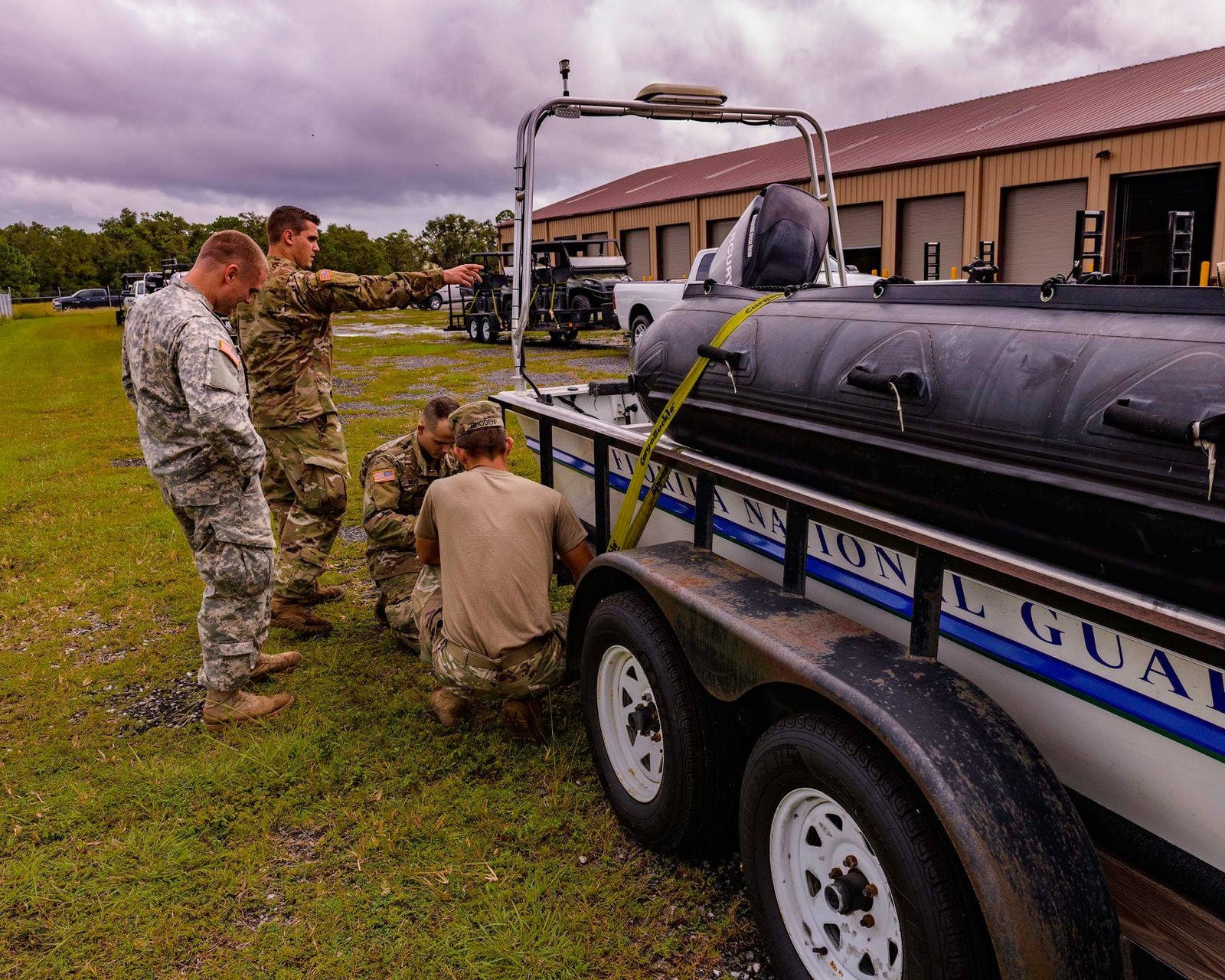Hurricane Michael sliced through the Florida Panhandle mid-Wednesday, hitting towns that had prepared for a Category 2 storm but found themselves in the cross hairs of a Category 4 hurricane instead.
Now the storm is aiming up the southeastern coast of the U.S., home to thousands of military families that just had a brush with Hurricane Florence last month.
Because Michael had not been expected to intensify as it did, thousands of coastal residents decided to ride it out at home, said Air Force Gen. Terrence O’Shaughnessy, commander of North American Aerospace Defense Command and U.S. Northern Command. There are 10 military bases, with a combined 700,000 military members and their families in Michael’s path, and not all of them evacuated, he said.
“One of my key concerns right now going into is that we haven’t seen as robust of an evacuation response from the civilian population that we have seen in other storms," O’Shaughnessy said. “I think its because of the way it kind of played out. Many are well prepared to go through a Cat 1 or Cat 2 storm, but it just very quickly gained in intensity.”

To respond, U.S. Northern Command has set in place thousands of forces, including scores of high-water vehicles and helicopters — to come to residents' aid in the aftermath.
The decision whether or not to evacuate was left to the base commander’s discretion. However, DoD did relocate its homeland defense air operations center temporarily from Tyndall Air Force Base; the base was being hit by the storm as O’Shaughnessy briefed reporters, he said.
RELATED

In the days after Michael passes, two pararescue teams and tankers are at Patrick Air Force Base to be able to fly in and “respond to any immediate requests," O’Shaughnessy said. Thirty five helicopters and 80 high-water vehicles are at Fort Stewart and Hunter Army Air Field in Georgia. The military has also pre-positioned generators and other commercial vehicles throughout Georgia, South Carolina and North Carolina.
No ships are taking part, as they did with Florence, because the military could base air support in southern Florida, which the hurricane did not hit, O’Shaunghnessy said.

In all, the military has 2,216 active duty personnel, 32 helicopters, 240 high-water vehicles and 32 swift water boats in place in the event that the governor of Florida requests the military’s assistance in rescues, O’Shaughnessy said. So far that request has not been made, as Florida has 2,300 of its own Guard forces activated, and due to its long history with hurricanes, has aircraft and ground supplies set to respond.
Where the military ends up responding could shift north as Michael moves up the coast to the Carolinas, which are still recovering from Hurricane Florence. O’Shaughnessy said Army Corps of Engineers personnel are still on the ground in the Carolina’s assisting with rebuilding efforts there.
Tara Copp is a Pentagon correspondent for the Associated Press. She was previously Pentagon bureau chief for Sightline Media Group.





